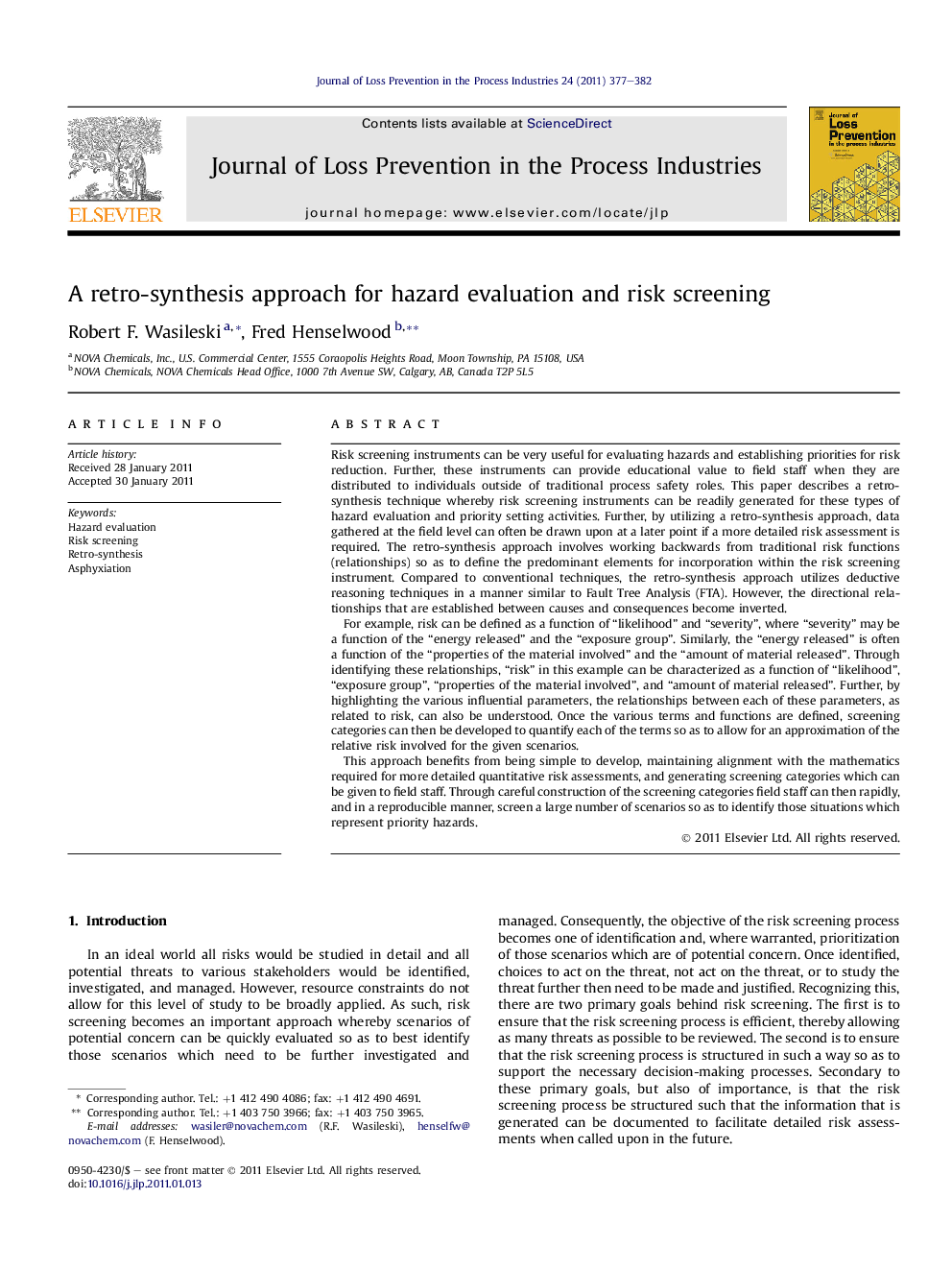| کد مقاله | کد نشریه | سال انتشار | مقاله انگلیسی | نسخه تمام متن |
|---|---|---|---|---|
| 586539 | 878220 | 2011 | 6 صفحه PDF | دانلود رایگان |

Risk screening instruments can be very useful for evaluating hazards and establishing priorities for risk reduction. Further, these instruments can provide educational value to field staff when they are distributed to individuals outside of traditional process safety roles. This paper describes a retro-synthesis technique whereby risk screening instruments can be readily generated for these types of hazard evaluation and priority setting activities. Further, by utilizing a retro-synthesis approach, data gathered at the field level can often be drawn upon at a later point if a more detailed risk assessment is required. The retro-synthesis approach involves working backwards from traditional risk functions (relationships) so as to define the predominant elements for incorporation within the risk screening instrument. Compared to conventional techniques, the retro-synthesis approach utilizes deductive reasoning techniques in a manner similar to Fault Tree Analysis (FTA). However, the directional relationships that are established between causes and consequences become inverted.For example, risk can be defined as a function of “likelihood” and “severity”, where “severity” may be a function of the “energy released” and the “exposure group”. Similarly, the “energy released” is often a function of the “properties of the material involved” and the “amount of material released”. Through identifying these relationships, “risk” in this example can be characterized as a function of “likelihood”, “exposure group”, “properties of the material involved”, and “amount of material released”. Further, by highlighting the various influential parameters, the relationships between each of these parameters, as related to risk, can also be understood. Once the various terms and functions are defined, screening categories can then be developed to quantify each of the terms so as to allow for an approximation of the relative risk involved for the given scenarios.This approach benefits from being simple to develop, maintaining alignment with the mathematics required for more detailed quantitative risk assessments, and generating screening categories which can be given to field staff. Through careful construction of the screening categories field staff can then rapidly, and in a reproducible manner, screen a large number of scenarios so as to identify those situations which represent priority hazards.
► This approach benefits from being simple to develop.
► Screening categories are generated which can be given to field staff.
► Staff can rapidly, and in a reproducible manner, screen a large number of scenarios.
► Situations which represent priority hazards are readily identified.
► Alignment is maintained with the mathematics required for detailed QRAs.
Journal: Journal of Loss Prevention in the Process Industries - Volume 24, Issue 4, July 2011, Pages 377–382